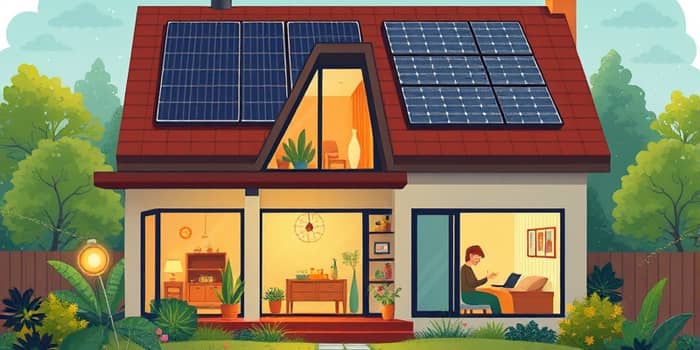
As the smart home revolution marches forward, homeowners are discovering not only greater convenience and comfort, but also significant financial rewards. From thermostats that learn your schedule to lighting systems that adjust to natural daylight, technology is reshaping how we live and spend. In this article, we explore the full financial landscape of design-led efficiency in smart homes, illustrating how strategic investments deliver long-term savings, enhance property value, and position households at the forefront of a booming market.
At the heart of every smart home is the goal to optimize energy use. Studies show that systems can cut household energy consumption by 15–30%, translating into $300–$600 annual savings for a typical family. This dramatic reduction stems from targeted control of heating, cooling, lighting, and appliances, coupled with real-time monitoring to eliminate waste.
Smart thermostats lead the charge, reducing heating and cooling costs by 10–23%, which equates to $140–$300 in yearly savings. ENERGY STAR models alone contribute an additional 8% cut on bills—around $50 each year—while advanced models using machine learning thermostats adapt to routines, yielding up to 26% savings. Geofencing features add another 7–12%, automatically adjusting temperature settings based on household members’ locations.
While the benefits are clear, potential adopters often hesitate at the upfront costs. Comprehensive systems range from comprehensive smart home setups cost $2,000–$15,000, with most homeowners spending $1,500–$5,000. Individual device prices vary: a smart thermostat costs $70–$350, while lighting upgrades carry higher initial expenditures but often faster returns.
Beyond breaking even, homeowners often see ROI for smart energy management systems exceed 300–600% over ten years. Utility rebates—up to $75 for smart thermostat purchases—further accelerate payback. When combined with behavioral changes like scheduling and remote monitoring, savings can climb even higher.
Smart home upgrades extend value beyond utility bills. Real estate analyses reveal that homes equipped with integrated smart systems command 3–5% higher resale prices. In a $400,000 home, this premium can exceed $12,000. Additionally, security and leak-detection features often qualify owners for 5–15% insurance discounts, transforming devices into multi-faceted assets.
Quality of life improvements resonate deeply as well. Automated schedules, remote control via smartphone apps, and personalized data dashboards deliver day-to-day comfort improvements, making smart homes both a financial and experiential investment.
Technology adoption is only part of the equation—user engagement drives further efficiency. Approximately 41% of smart home users set automated schedules, and 19% monitor energy via real-time dashboards. When homeowners actively manage devices, savings can rise by an additional 5–10%.
Despite clear benefits, barriers remain. Upfront cost continues to deter many consumers, even in higher-income brackets. Perceived complexity and concerns about interoperability and data privacy also slow adoption. Addressing these issues through streamlined installation, bundled service offerings, and transparent data policies will be critical.
Looking forward, continued market growth—projected revenue of $174 billion by 2025 and a 9.55% CAGR through 2029—signals robust consumer demand. Government incentives, increased retrofit programs, and advancements in solar integration will widen access. As technology becomes more intuitive and cost-effective, smart homes will transition from luxury to mainstream, delivering design-led efficiency that benefits wallets, communities, and the planet.
References





